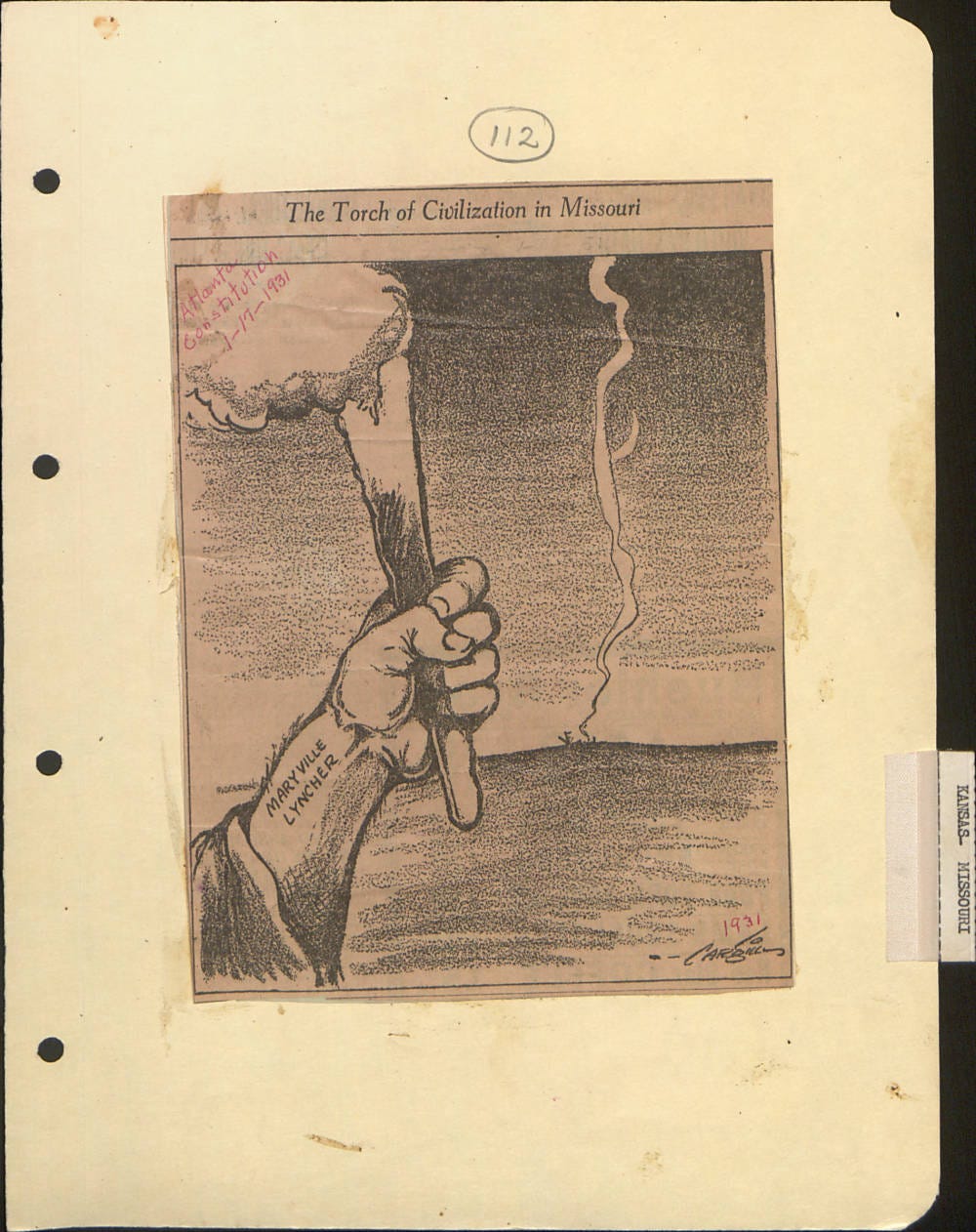A Shameful History, Part 3
Teaching the hard history...
The Lynching
His spirit in smoke ascended to high heaven.
His father, by the cruelest way of pain,
Had bidden him to his bosom once again;
The awful sin remained still unforgiven.
All night a bright and solitary star
(Perchance the one that ever guided him,
Yet gave him up at last to Fate's wild whim)
Hung pitifully o'er the swinging char.
Day dawned, and soon the mixed crowds came to view
The ghastly body swaying in the sun:
The women thronged to look, but never a one
Showed sorrow in her eyes of steely blue;
And little lads, lynchers that were to be,
Danced round the dreadful thing in fiendish glee.
~Claude McKay
The lynching of Raymond Gunn is a story that needs to be told and TAUGHT. In this era of lawmakers attacking teachers for teaching “divisive topics” and “CRT” we need to stand up for teaching the hard history. Teaching the correct history. Teaching history unvarnished, warts and all. Even if that history is local and painful.
When I taught the history of the lynching of Raymond Gunn through American Literature, pairing the story with poetry and music, students understood the dark history. My students did not feel the shame as my GOP lawmakers assure right-wing “parental rights” activists students will feel.
My students were outraged. They were angry. They were motivated to learn more and do better.
You know about the Garrett Schoolhouse that was burned and abandoned in the lynching, but there is another schoolhouse that was lost and almost no one speaks of it—The Douglass Schoolhouse. It was a segregated Black school in Maryville.
Minutes from the May 14, 1931, Maryville Board of Education indicate that the dwindling number of students could have been related to tension created by the lynching of Raymond Gunn on Jan. 12.
Records show that Gunn’s younger siblings were attending the Douglass School fewer than five years before the incident.
The Black community in Nodaway County was almost non-existent in the 1940 census due to the lynching and the fear that more violence would befall Black Maryville residents. This is the untold story of racial violence.
“We have to remember and teach every generation that lynchings were not the actions of a few marginalized vigilantes or extremists; they were bold, public acts that implicated the entire community and sent a clear message that African Americans were less than human, their subjugation was to be achieved through any means necessary, and whites who undertook the duty of carrying out lynchings would face no legal repercussions.”
We teach an accurate history not just so we don’t repeat it, but for context…for understanding. When we see or read something is is off kilter, and we have learned out history, we recognize the danger and therefore can stop the danger.
“Teaching about the history of lynching is not pretty; it demands that we talk about mangled bodies and burned flesh, and acknowledge broken families and lives. But it is our history, American History, and it must be addressed out loud, openly and bravely. We must teach about lynching, not only for those who have perished at the hands of white supremacists, but also for future generations.
Understanding this dark and painful history keeps us from turning a blind eye to the worst parts of the United States, and gives us the opportunity to build the world we hope for through our students—one in which the noose and its symbolism are relegated to history.”
Jess




https://x.com/eddsmitty/status/1712774564512743592?s=46&t=i8T-ishP2rg5hvQtcOX7zQ